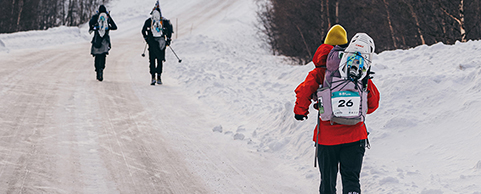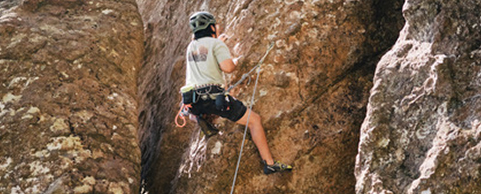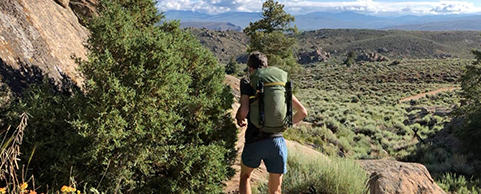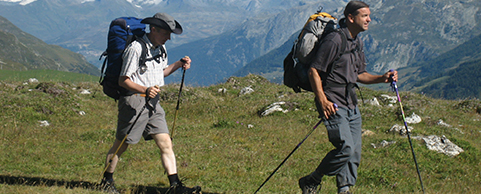Crag Etiquette: Environmental
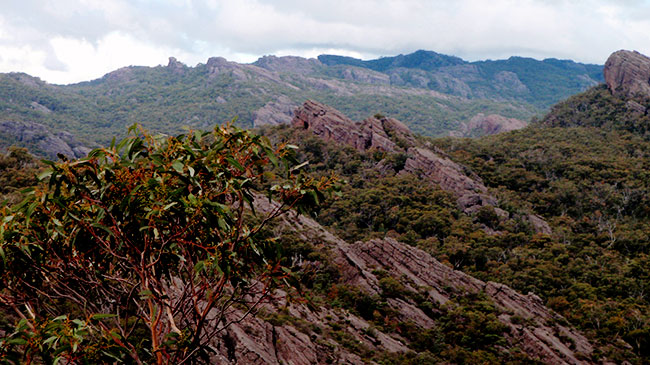
The Grampians. Image: Chelsea Brunckhorst
Climbing and bouldering are growing sports. The number of climbing and bouldering gyms sprouting in Melbourne and Sydney are astronomical. It's great to have more people getting into the sports we love. But, with more people, comes more impact – particularly on our outdoor crags and boulder fields, of which there are only so many.
Climbing and bouldering outdoors might be new to you. And, if you're just starting out, it might not be obvious what the general 'rules' are, when it comes to looking after the environment you're climbing or bouldering in. So, here's a cheat sheet on how to keep the great outdoors great for all of us.
Check the rules.
Before you head to any cliff, check the most recent access rules. Look for the latest updates at cliffcare.org.au. Some areas are closed to let them recover after fire, or for sensitive cultural reasons. Whatever the reason, respect them. If you don't, you're not only damaging the environment for future users; you could also be putting access to that cliff at risk.
Stick to established tracks.
It can be tempting to make make a beeline for a boulder or the base of a climb because you know that it'll get you there faster. But, what happens when people start using alternative trails over and over again? We end up with too many tracks criss-crossing the place and causing more erosion problems in the area. Yes: the established track might take a roundabout (scenic!) way, but there's probably a good reason why it does. (Also: Please respect 'Track Closed' signs.)
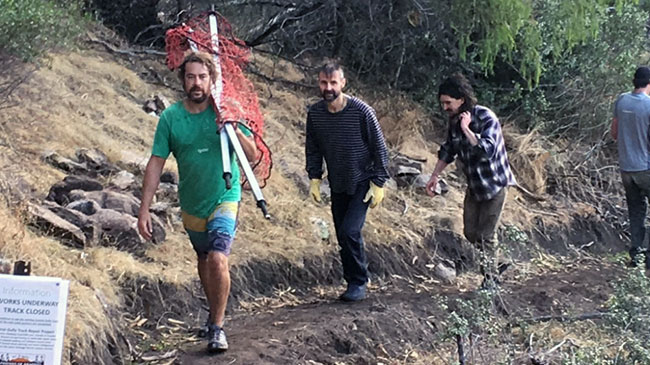
Volunteers doing track work in Central Gully, Arapiles. Image: Courtesy CliffCare
Do your business the right way.
We wrote an entire blog article about this. In a nutshell: Walk a little way off the track to wee. Don't poo in creeks or waterways. Don't do either beneath what could be the start of a climb or boulder problem! And, if you're using toilet paper, dig a hole and bury it. Even if you're doing a Number 1. If you can't handle it, use the closest public toilet.
Take your rubbish with you.
It's a no-brainer. But, people still need reminding. This includes food waste like apple cores, mandarin seeds, etc.
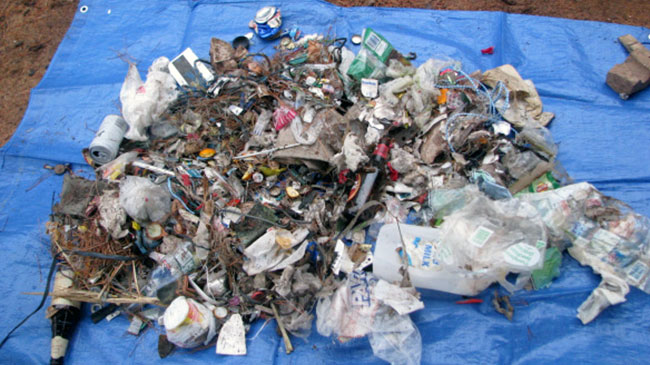
Rubbish collected in the Grampians on a Clean Up Day in 2008. Image: Courtesy CliffCare
Don't destroy vegetation to access climbs or boulders.
Don't snap tree branches, or sit on or remove bushes in the area. Native wildlife uses scrub for cover, and other park users admire native plants and use trees for shade.
Avoid using excessive chalk.
When you're done on your climb or boulder problem, use a climbing brush to remove excess chalk. Tick marks, particularly. Also, don't let your kids draw on rock with coloured chalk. It's composed of different stuff to climbing chalk, and it takes a while for rain to wash it away.
Don't use wire brushes.
Use an appropriate brush – climbing stores sell them. Brushes with natural bristles work the best, generally. DON'T use wire brushes, because they damage soft rock.
Look out for aboriginal art.
Aboriginal art can be subtle and hard to see. Also, respect rules surrounding sites of cultural importance. Not doing so could lead to climbing being banned in these areas in the future. One example of a place that cultural heritage teams and traditional owners are currently concerned about is the crag climbers know as Black Ians Rocks.
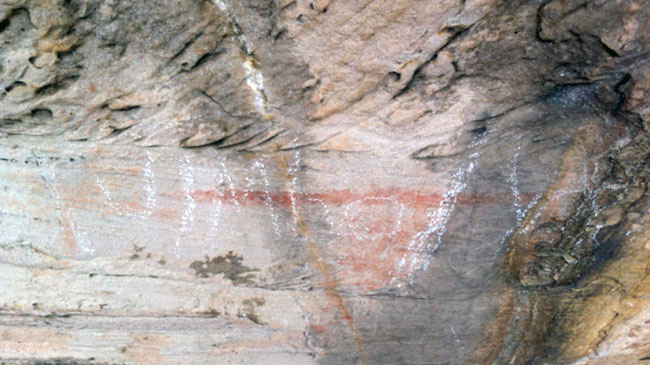
Graffiti at Black Ians Rocks in 2015. Image: Courtesy CliffCare
Don't graffiti.
It seems bleedingly obvious, but apparently it's not.
Check the rules for cats and dogs.
Most crags in Victoria are inside national or state parks. With a few exceptions, cats and dogs are not allowed – leashed or unleashed. It doesn't matter if your dog "doesn't run off", "doesn't chase" or "is very friendly" – even a cat or dog's scent can disturb native wildlife. Domestic cat or dog urine and excrement can also attract wild dogs, foxes and feral cats. Not to mention, there's the possibility of unknowingly transmitting diseases and parasites to the native fauna.
Don't light fires outside designated areas.
Besides the possibility of starting a bushfire, you might also damage the rock irreparably. If you impact a classic climb or boulder problem, you might find the entire climbing community chasing you with a pitchfork. Worse still, if you damage any cultural heritage sites, the consequences might affect everyone – not just you.
Visit cliffcare.org.au for more information.
More Articles
- WHERE DO ROCK CLIMBERS POOP?
- REVIEW: GRAMPIANS ROCK CLIMBING GUIDEBOOKS
- GLOSSARY FOR ROCK CLIMBING
- MORE RESOURCES...













